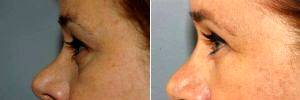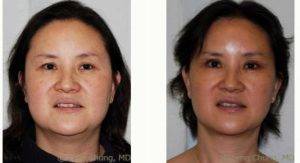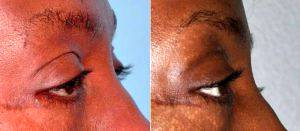Question You Need To Ask Undergoing Upper Eyelid Surgery
There are many surgical cosmetic procedures that are frequently performed, and one of these procedures is the upper eyelid surgery.
This surgery is used to eliminate accumulated fat deposits, drooping, and loose skin that occur around the upper eyelids due to aging.
Aside from aging, there are also other factors that can speed up signs of aging around the eyes including sun damage as well as heredity.
There are also younger people who choose to undergo this type of blepharoplasty surgery in order to remove the puffiness of their eyes that has been caused by congenital excess fat tissues.
While blepharoplasty surgery is commonly performed on people who would like to enhance their overall appearance, this procedure also have some functional benefits.
However, if you are interested in undergoing an upper eyelid surgery, make sure that you take time in asking the following questions in order to learn more about what to expect from this type of blepharoplasty surgery.
What are the main benefits of upper eyelid surgery?
Undergoing an upper eyelid surgery can result in a significant difference and change in the overall look of the face.
This type of blepharoplasty surgery can help alleviate the signs of aging that is most evident around the eyes.
Upper eyelid blepharoplasty can eliminate the tired and fatigued look of your eyes that make you appear older. After this type of surgery is performed successfully, your eyes will become more youthful and appear more refreshed.
Great results from a successful upper eyelid blepharoplasty can also last for many years.

33 Year Old Woman Treated With Eyelid Surgery (upper And Lower Lids) By Dr. John Mesa, MD, New York Plastic Surgeon
How does a surgeon perform an upper eyelid surgery?
A surgeon may either choose to give a patient a local anesthesia or a general anesthesia. If a patient is given a local anesthesia, it means that the patient will be awake during the surgery but will not feel any pain.

47 Yea Old Female, Upper Lid Blepharoplasty And Fat Grafting By Dr. Lucie Capek, MD, Latham Plastic Surgeon
On the other hand, general anesthesia will put the patient to sleep for the surgery. Once the patient has been given an anesthesia, the surgeon will create an incision in the natural fold of the skin in the upper eyelid.
Accumulated fatty tissue and excess skin will be removed through this opening. The orbital septum as well as the muscles may also be tightened.
Once the surgeon is done removing the accumulated fatty deposits, excess muscle and skin, as well as tightening the orbital septum and muscles, fine sutures will be used in order to close the incision.
These external incisions will be hidden within the natural skin folds of the upper eyelids. A big part of the operation is usually done using very fine electrocautery, which controls bleeding. A special kind of ointment will be applied around the area where the surgery has been performed to complete the procedure.

36 Year Old Woman Treated With Upper Eyelid Surgery By Doctor Thomas Buonassisi, MD, Vancouver Facial Plastic Surgeon
How long does an upper eyelid surgery take?
Depending on the extent of the surgery that is required to be performed, an upper eyelid surgery may take between one to three hours to complete. The type of technique used by the surgeon in performing this procedure also affects the overall length of time to complete the surgery.
Is an overnight hospital stay required after undergoing an upper eyelid surgery?
Most patients of upper eyelid surgery are not required by their doctors to spend the night in the hospital after the procedure is performed. However, this will still depend on your preference as well as the recommendation of your surgeon.
Upper eyelid blepharoplasty can be performed in the hospital, in a surgical suite or even on an out patient basis. Local anesthesia or general anesthesia will be given to a patient before the surgery.

46 Year Old Woman Treated With Upper Eyelid Lift With Dr Chia Jen Lynn Chung, MD, Puyallup Plastic Surgeon
Are there any risks associated with upper eyelid surgery?
Major complications from undergoing upper eyelid surgery are not very common. However, a surgery is still a surgery, and since this is still a type of cosmetic surgical procedure, there is always a possibility of risks.
These risks include an adverse reaction to the anesthesia used or infection. If you have existing medical conditions, make sure that you inform your doctor about this first in order to find out if undergoing upper eyelid blepharoplasty will not aggravate your condition.
Is there any pain after undergoing an upper eyelid surgery?

52 Year Old Female Treated For Extra Upper Eyelid Skin With Dr. Barry L. Eppley, MD, DMD, Indianapolis Plastic Surgeon
After the upper eyelid surgery, you may feel tightness around your eyes. You may also feel minor discomfort that usually lasts for only a day or two. You can choose to take a mild pain reliever if you want to avoid any sensation of pain.
However, a lot of patients who have undergone this type of blepharoplasty have been surprised at having felt no pain after the surgery. This surgical procedure has a total recovery period of between seven to ten days.
What should be expected after an upper eyelid surgery?
Your surgeon will apply a special ointment to the area where the upper eyelid surgery has been performed on. This will help reduce dryness that may occur after the procedure. Since this special type of ointment is required to be applied days after surgery, you should expect to have a blurry vision due to the application of the ointment.
The first evening after the upper eyelid blepharoplasty procedure, you should rest your head at an elevated position. Applying cold compress will also help your eyelids feel more comfortable. However, make sure that your cold compress is not be more than one ounce. You should also monitor your blood pressure regularly to prevent bleeding complications from occurring.